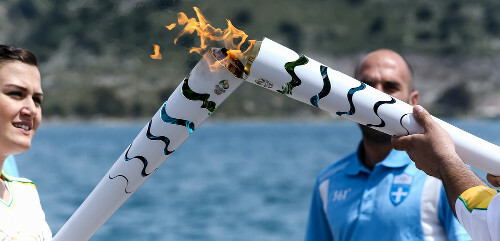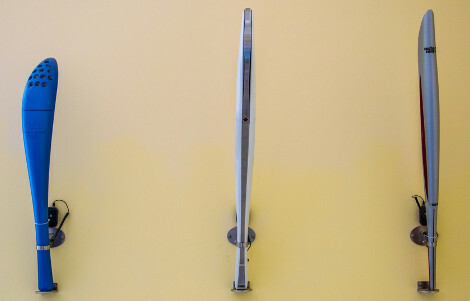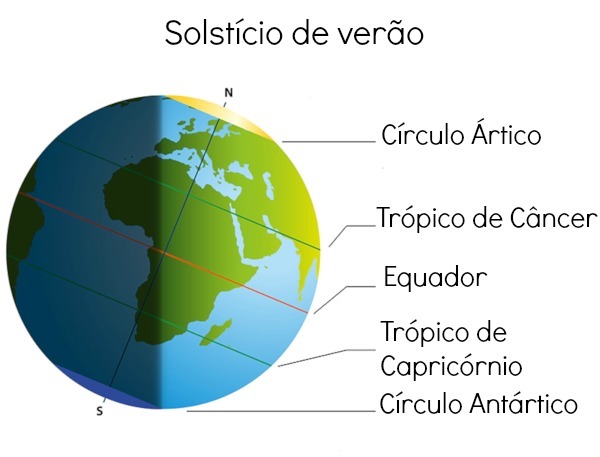THE Olympic torch, one of the main symbols of the olympic games, is developed at each edition of the event based on the characteristics of the country where the games should take place. Furthermore, the torch is loaded with meanings that refer to Ancient Greece, where the Olympics originated.
The fire, which is lit on the Olympic pyre on the opening stage of the games, is lit 100 days before the start of the competition, in Olympia, Greece, from sunlight. Before boarding for the host city, the lit torch passes through some Greek cities and other locations in the country that will host the games.
The torch relay, which precedes the opening of the Olympic Games, is a representation of a Greek legend. In this legend, Prometheus (a titan defender of humanity) would have stolen the fire, which represents the divinity and wisdom of the gods, from Zeus and given it to humans.
In addition to all the cultural and historical symbolism that permeates the lighting of the Olympic pyre, there are some curiosities about the torch that can be explained by science.
the lighting
In the ceremony to light the Olympic fire, performed by eleven women characterized as priestesses, a small amount of dry grass is placed on an instrument called skaphia (a kind of concave mirror that aggregates the sun's rays in a single point). According to Professor Diogo Lopes, the format of the skaphia, associated with the fact that its surface is made of metal, causes the temperature inside it to increase, causing a combustion.

The concave shape of the skaphia concentrates the sun's rays in a single point, causing a combustion
Once lit, the flame of skaphia is passed on to the Olympic torch, which runs in relay to the venue for the opening of the games. However, it is not only the torch that is lit in this ceremony, the fire is also transferred to a kind of lantern that has fuel to last 15 hours. There are four lamps that travel the world relighting the torch.
relay
Traditionally athletes and personalities take turns carrying the torch until the pyre is lit. In general, this is done by land, and the conductor makes the journey on foot, but it is not uncommon for fire to be taken by car, bus, cable car and other means of transport.
In 1976, for the realization of the Olympics in Montreal, Canada, pyrotechnic effects were used to conduct the flame. The fire was transformed into an electrical impulse and sent from Athens, via satellite, to be rekindled in Canada by means of a laser beam.
Another unusual form of transport occurred in the 2000 games, held in Sydney, Australia. During the relay, divers carried the flame underwater in Queensland's Coral Sea. To accomplish this feat, the fire was preserved in a lantern containing water-resistant propylene.
the fuel
As in the cooking gas cylinder, the fire of the Olympic torch is generated by the combustion of Liquefied gas from Petroleum (LPG), basically composed of propane and butane. According to Professor Diogo's explanations, inside the torch, the LPG is in a liquid state, but there is a internal pressure reduction system which, when activated, causes evaporation of the substance, transforming it into gas.
The evaporated LPG generates combustion, keeping the flame lit. The cartridge with the gas is inserted at the bottom and has fuel to burn for only 20 minutes. Therefore, several torches are manufactured and the relay takes place. just for the Olympics in Rio de Janeiro, in 2016, 12 thousand torches were manufactured.
The torch does not go out?
There is no flame if there is no fuel and oxidizer (oxygen gas), so, like any other fire, the torch also lasts. Therefore, it is necessary to replenish fuel so that the flame remains lit, and that is what happens during the relay: torches filled with gas replace those that have already burned for some time.

During the passage of the flames, the organization replaces torches already burned with ones filled with gas
The need to replenish gas also justifies the four lamps that come with the torch. The alternation of the flame with the replacement of fuel over the days ensures that the fire that will light the Olympic pyre is the same one that was lit in Olympia. Unlike the torch, the cartridges for these lanterns are replaceable.
According to Professor João Roberto Mazzei, from the Enem HQ, the mechanisms developed to keep the fire from torch lit are designed to withstand winds of up to 120 km/h and a moderate level of rainfall, ie, rain. Therefore, thanks to its protection system, located above the burner, fire does not go out easily.
Torch making
For a long time, the material to produce the torch was steel, which made it quite heavy. Currently, the main raw material is aluminum, which, according to Professor Mazzei, greatly reduces the weight of the piece. To prevent the structure from heating up, there is thermal insulation just below the pilot flame, preventing heat from expanding.

The characteristics of the torch depend on the organizing committee of the event in each edition
Each host city develops the torch design based on regional characteristics. For 2016, the piece has five segments that expand and bring different colors, symbolizing the sky, mountains, sea and ground.
by Rafael Batista
Brazil School Team
Source: Brazil School - https://brasilescola.uol.com.br/curiosidades/como-funciona-tocha-olimpica.htm


